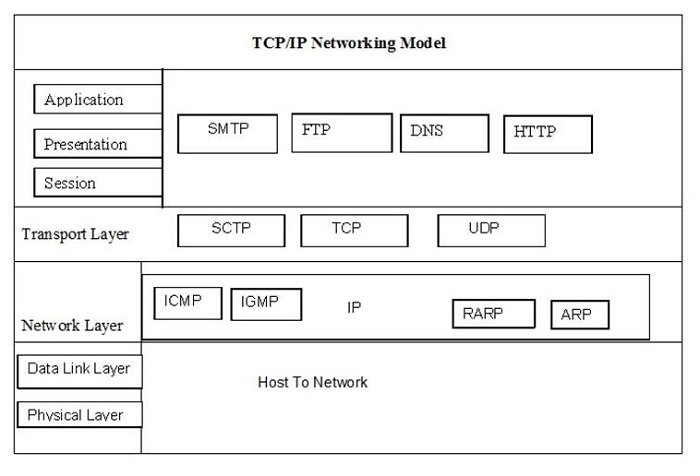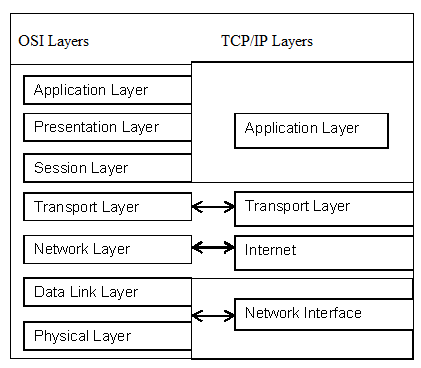
- Data Comm & Networks Home
- DCN - Overview
- DCN - What is Computer Network
- DCN - Uses of Computer Network
- DCN - Computer Network Types
- DCN - Network LAN Technologies
- DCN - Computer Network Models
- DCN - Computer Network Security
- DCN - Components
- DCN - Connectors
- DCN - Switches
- DCN - Repeaters
- DCN - Gateways
- DCN - Bridges
- DCN - Socket
- DCN - Network Interface Card
- DCN - NIC: Pros and Cons
- DCN - Network Hardware
- DCN - Network Port
- Computer Network Topologies
- DCN - Computer Network Topologies
- DCN - Point-to-point Topology
- DCN - Bus Topology
- DCN - Star Topology
- DCN - Ring Topology
- DCN - Mesh Topology
- DCN - Tree Topology
- DCN - Hybrid Topology
- Physical Layer
- DCN - Physical Layer Introduction
- DCN - Digital Transmission
- DCN - Analog Transmission
- DCN - Transmission media
- DCN - Wireless Transmission
- DCN - Transmission Impairments
- DCN - Multiplexing
- DCN - Network Switching
- Data Link Layer
- DCN - Data Link Layer Introduction
- DCN - Data Link Control & Protocols
- DCN - RMON
- DCN - Token Ring Network
- DCN - Hamming Code
- DCN - Byte Stuffing
- DCN - Channel Allocation
- DCN - MAC Address
- DCN - Address Resolution Protocol
- DCN - Cyclic Redundancy Checks
- DCN - Error Control
- DCN - Flow Control
- DCN - Framing
- DCN - Error Detection & Correction
- DCN - Error Correcting Codes
- DCN - Parity Bits
- Network Layer
- DCN - Network Layer Introduction
- DCN - Network Addressing
- DCN - Routing
- DCN - Internetworking
- DCN - Network Layer Protocols
- DCN - Routing Information Protocol
- DCN - Border Gateway Protocol
- DCN - OSPF Protocol
- DCN - Network Address Translation
- DCN - Network Address Translation Types
- Transport Layer
- DCN - Transport Layer Introduction
- DCN - Transmission Control Protocol
- DCN - User Datagram Protocol
- DCN - Congestion Control
- DCN - TCP Service Model
- DCN - TLS Handshake
- DCN - TCP Vs. UDP
- Application Layer
- DCN - Application Layer Introduction
- DCN - Client-Server Model
- DCN - Application Protocols
- DCN - Network Services
- DCN - Virtual Private Network
- DCN - Load Shedding
- DCN - Optimality Principle
- DCN - Service Primitives
- DCN - Services of Network Security
- DCN - Hypertext Transfer Protocol
- DCN - File Transfer Protocol
- DCN - Secure Socket Layer
- Network Protocols
- DCN - ALOHA Protocol
- DCN - Pure ALOHA Protocol
- DCN - Sliding Window Protocol
- DCN - Stop and Wait Protocol
- DCN - Link State Routing
- DCN - Link State Routing Protocol
- Network Algorithms
- DCN - Shortest Path Algorithm
- DCN - Routing Algorithm
- DCN - Leaky Bucket Algorithm
- Wireless Networks
- DCN - Wireless Networks
- DCN - Wireless LANs
- DCN - Wireless LAN & IEEE 802.11
- DCN - IEEE 802.11 Wireless LAN Standards
- DCN - IEEE 802.11 Networks
- Multiplexing
- DCN - Multiplexing & Its Types
- DCN - Time Division Multiplexing
- DCN - Synchronous TDM
- DCN - Asynchronous TDM
- DCN - Synchronous Vs. Asynchronous TDM
- DCN - Frequency Division Multiplexing
- DCN - TDM Vs. FDM
- DCN - Code Division Multiplexing
- DCN - Wavelength Division Multiplexing
- Miscellaneous
- DCN - Shortest Path Routing
- DCN - B-ISDN Reference Model
- DCN - Design Issues For Layers
- DCN - Selective-repeat ARQ
- DCN - Flooding
- DCN - E-Mail Format
- DCN - Cryptography
- DCN - Unicast, Broadcast, & Multicast
- DCN - Network Virtualization
- DCN - Flow Vs. Congestion Control
- DCN - Asynchronous Transfer Mode
- DCN - ATM Networks
- DCN - Synchronous Vs. Asynchronous Transmission
- DCN - Network Attacks
- DCN - WiMax
- DCN - Buffering
- DCN - Authentication
- DCN Useful Resources
- DCN - Quick Guide
- DCN - Useful Resources
- DCN - Discussion
TCP/IP Model in Computer Networks
TCP/IP Model
Transmission Control Protocol/Internet Protocol (TCP/IP) model is a concise version of the OSI Model. The TCP/IP protocol suite was developed before the OSI model. But the layers in the TCP/IP protocol suite do not exactly match those in the OSI model.
TCP/IP Protocol
- The original TCP/IP protocol uses four layers host-to-network, Internet, Transport, and Application layer.
- The host-to-network layer is equivalent to the combination of physical and data link layers in the OSI model.
- The Internet layer in TCP/IP is equivalent to the Network layer of the OSI model. And the Application layer does the job of the Session, Presentation, and Application layers with the Transport layer in TCP/IP.
- In the TCP/IP model, the first four layers provide physical standards, network interface, internetworking, and transport functions.
- The first topmost layers (application, presentation, and session layers) in the OSI model are represented in TCP/IP by a single layer called the application layer.
- In the Transport layer, the TCP/IP model defines three protocols Transmission Control Protocol (TCP), User Datagram Protocol (UDP), and the Stream Control Transmission Protocol (SCTP).

TCP/IP Protocol Suite to OSI Reference Model
The following diagram illustrates the mapping of the TCP/IP Protocol Suite to the OSI Reference Model:

Layers of TCP/IP Model
1. Application Layer
In TCP/IP, the Application layer protocols provide services to the application software running on a computer. The application layer uses HTTP, POP3, and SMTP protocols. The application layer provides an interface between the software running on a computer and the network itself.
2. Transport Layer
In TCP/IP, the Transport layer includes transmission control protocol (TCP) and user datagram protocol (UDP). TCP provides services to the application layer that reside above the transport layer or higher within the TCP/IP model.
3. Internet Layer (Network Layer)
The Internet layer in the TCP/IP model is the Network Layer 3 of the OSI model. It stores the IP addresses and the routing data. When data is transmitted from a node on one LAN to a node on a different LAN, the Internet Layer is used. IPv4, IPv6, ICMP, and routing protocols (among others) are the Internet Layer TCP/IP protocols.
4. Host-to-Network or Link Layer
In TCP/IP, the Host-to-Network layer is also called the network interface or link layer. It provides services to the upper layer within the model. When a hosts or routers IP process chooses to send an IP packet to a different router or host, that host or router then uses the link-layer details to send that packet to the next host/router.
This layer is the lowermost layer of the TCP/IP model; it is concerned with the physical transmission of data. It is like a combination of the data link layer and physical layer of the OSI model.